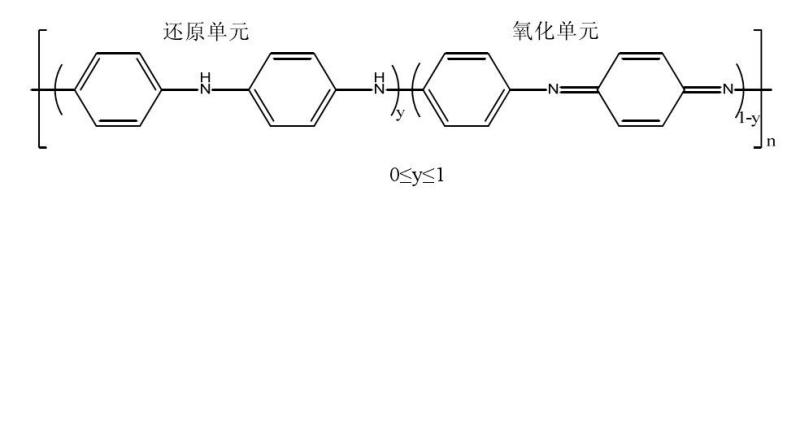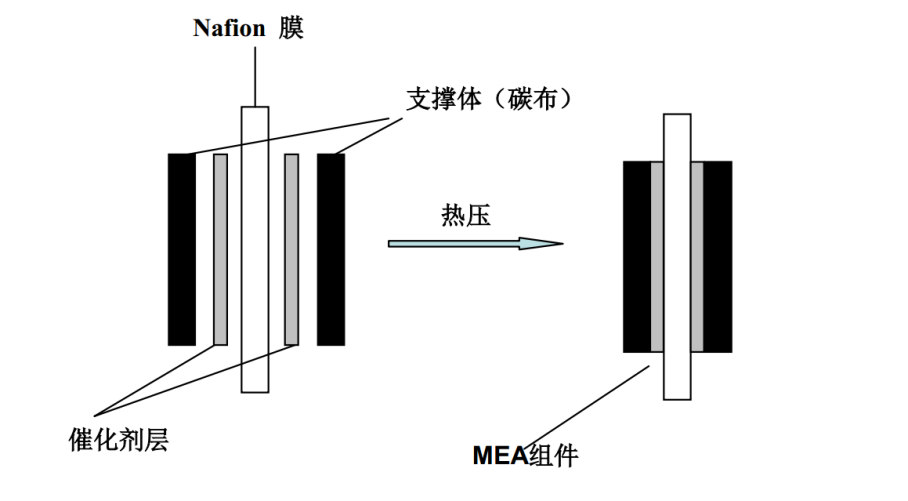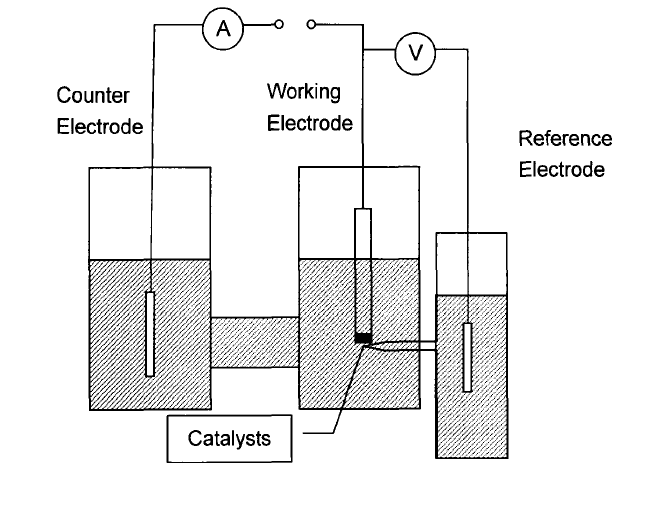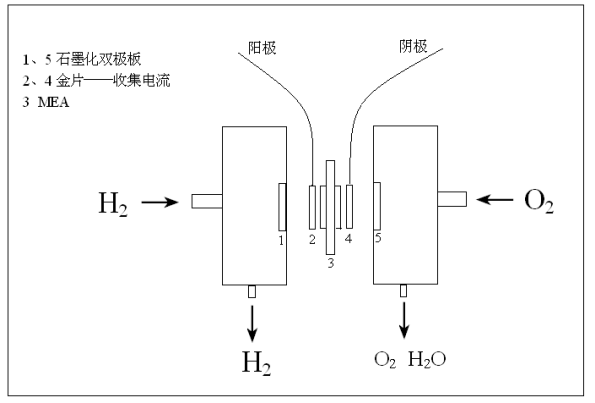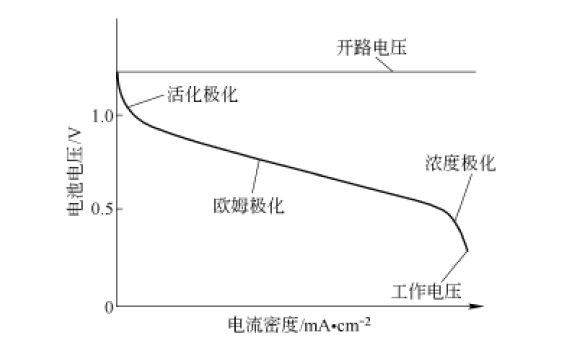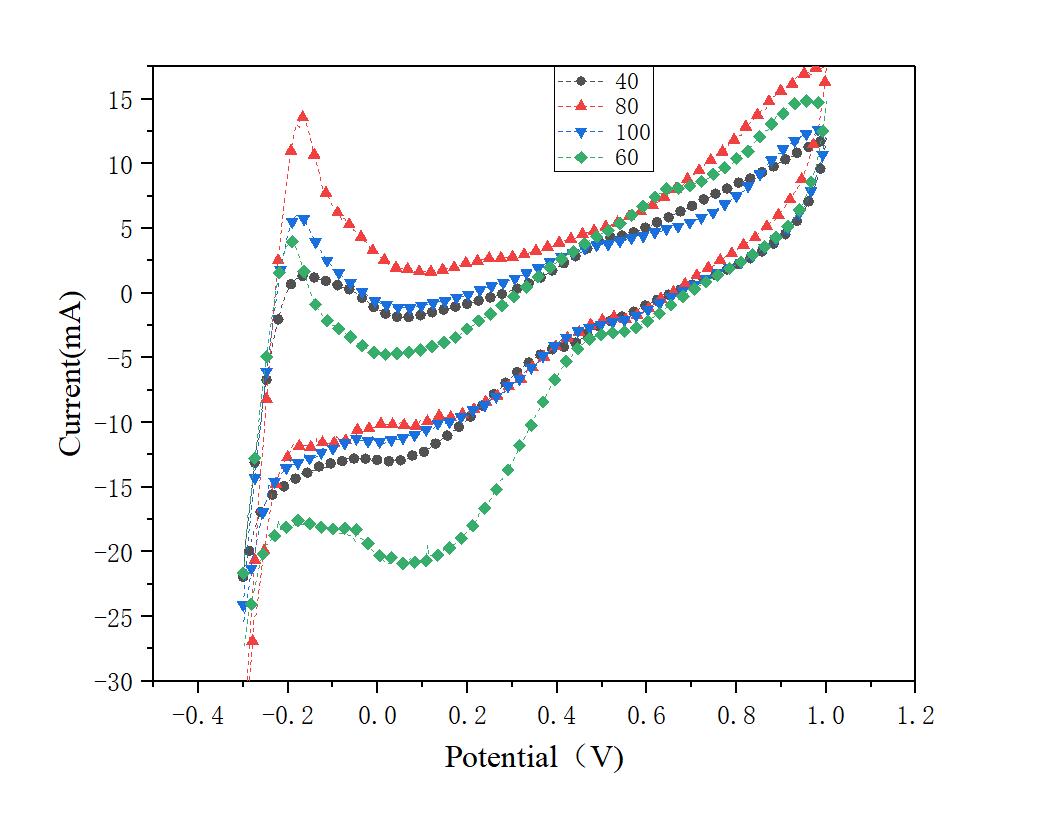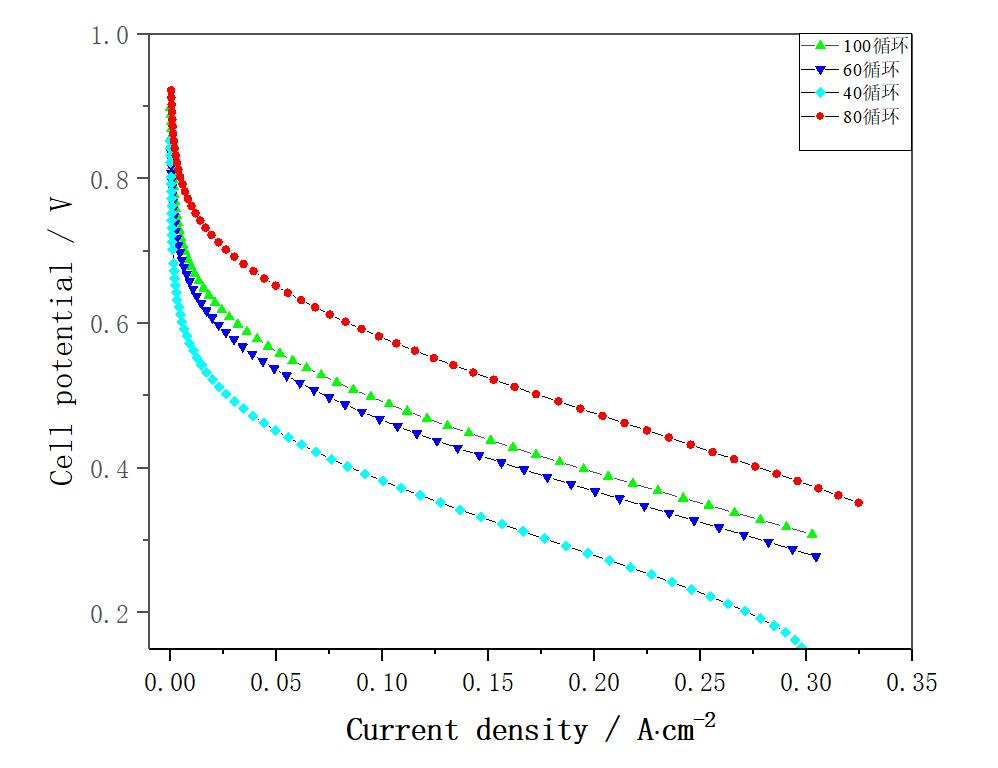聚苯胺C载Pt-Ni燃料电池催化剂的制备与表征毕业论文
2020-07-07 21:56:49
摘 要
本实验主要研究将导电材料聚苯胺引入到电极催化剂中以提高质子交换膜燃料电池的稳定性与耐久性。通过采用脉冲电沉积法将聚苯胺沉积到碳布上制成新型复合载体,在复合载体上电沉积Pt-Ni合金催化剂,通过不同的测试方法来表征制备的催化剂。首先探究不同循环次数脉冲法制备的复合膜对催化剂性能的影响,然后比较Pt-Ni合金催化剂与纯Pt催化剂的催化活性,最后选出具有最佳性能的催化剂进行耐久性测试。结果发现,循环次数为80时,制备的Pt-Ni合金催化剂催化性能最高;Pt-Ni合金催化剂相比纯Pt催化剂拥有更高的催化性活性。聚苯胺加入催化剂后可以有效抑制铂粒子的脱落与溶解,从而可以改善Pt粒子的稳定性;同时聚苯胺覆盖在碳载体上,可以防止碳直接暴露在外面以及很好地保护碳载体不被腐蚀,提高了催化剂的稳定性与耐久性。
关键词:聚苯胺 质子交换膜燃料电池 Pt-Ni催化剂 稳定性
Preparation and Characterization of Pt-Ni-PANI/C Fuel Cell Catalyst
Abstract
This experiment mainly studied the introduction of conductive material polyaniline into the electrode catalyst to improve the stability and durability of the proton exchange membrane fuel cell(PEMFC). A novel composite carrier was prepared by depositing polyaniline onto a carbon cloth by pulsed electrodeposition, and Pt-Ni alloy catalyst was electrodeposited on the composite carrier. The prepared catalysts were characterized by different test methods. Firstly, the influence of the composite membrane prepared by pulse method with different cycle times on the catalyst performance was investigated. Then the catalytic activity of the Pt-Ni alloy catalyst and the pure Pt catalyst was compared. Finally, the catalyst with the best performance was selected for durability testing. It was found that the Pt-Ni alloy catalyst prepared with the cycle number of 80 had the highest catalytic activity; the Pt-Ni alloy catalyst had higher catalytic activity than the pure Pt catalyst. Polyaniline can effectively inhibit the exfoliation and dissolution of platinum particles after being added the catalyst, so that the stability of the Pt particles can be improved; at the same time, the polyaniline is covered on the carbon carrier, the carbon can be protected from being directly exposed to the outside, and the carbon carrier can be well protected from corrosion.Thus,the stability and durability of the catalyst can be improved.
Key words: Polyaniline;PEMFC;Pt-Ni catalyst;Stability
目 录
摘要 I
ABSTRACT II
第一章 文献综述 1
1.1 引言 1
1.2 概述 1
1.2.1 PEMFC研究历程 1
1.2.2 PEMFC的结构与原理 2
1.2.3 PEMFC的存在问题 4
1.3 质子交换膜燃料电池催化剂 5
1.3.1 PEMFC催化剂的研究开发 5
1.3.2 PEMFC稳定性与耐久性改进 5
1.4 导电聚合物聚苯胺在电池中的应用 6
1.4.1 有机导电聚合物的发现 6
1.4.2 导电聚苯胺的研究 6
1.4.3 聚苯胺膜的制备 7
1.5 论文研究的目的及内容 8
第二章 实验方法 9
2.1 仪器与试剂 9
2.1.1 仪器 9
2.1.2 试剂 10
2.2 实验方案 10
2.2.1 碳布载体的亲水性处理 10
2.2.2 脉冲法制备聚苯胺膜 11
2.2.3 Pt-Ni催化剂的制备 11
2.2.4 膜电极的制备 12
2.3 催化剂的测试与表征 12
2.3.1 红外光谱分析 12
2.3.2 催化剂电化学性能测试 12
2.3.2.1循环伏安测试 12
2.3.2.2单电池极化测试 13
第三章 结果与讨论 15
3.1 脉冲法(不同循环次数)电沉积聚苯胺膜的性能影响 15
3.2 脉冲沉积聚苯胺的结构分析 16
3.3 Pt-Ni催化剂的制备与表征 18
3.4 催化剂耐久性测试 15
第四章 结论 21
第五章 展望 22
参考文献 23
致 谢 26
第一章 文献综述
1.1 引言
随着时代的发展与社会的进步,人们对资源的需求越来越多,但环境污染与资源枯竭等问题也随之而来,这也逐渐引起了社会与国家的高度重视,于是环境保护、节约资源等一系列的可持续发展措施相继推出。由于人们对环境污染和能源问题的不断探索,这也使得科学技术取得了巨大的发展[1-3]。在之前,全球各个国家以石油、煤炭等化石燃料作为能源动力,现如今人们对生活质量的要求越来越高,想要更绿色、经济、安全的能源,因此掀起一场能源革命热潮。
在过去社会发展的长河中,生活中所见到的能量转化均会经过热机过程才能使得能量实现转换。热机在工作中由于受到卡诺循环的限制,这就使得能量的利用率很低,从而造成能源严重的浪费,并且还伴随着大量有害物质以及噪声的产生[4]。于是产生了大气污染,土壤污染、水污染等一系列的污染问题,这也使得人们的生活质量大大降低,阻碍者社会时代的进步。
相关图片展示:
